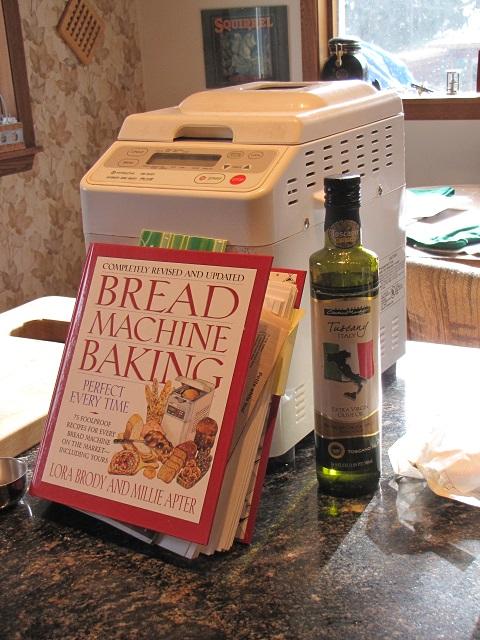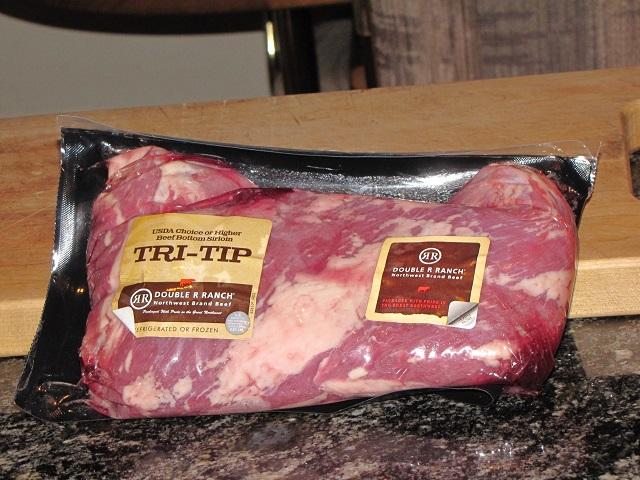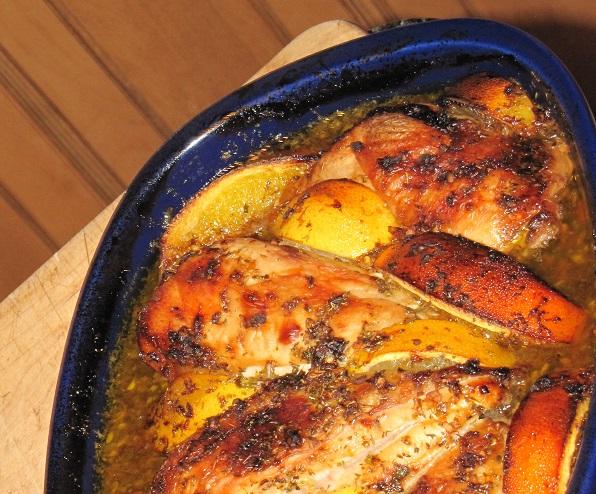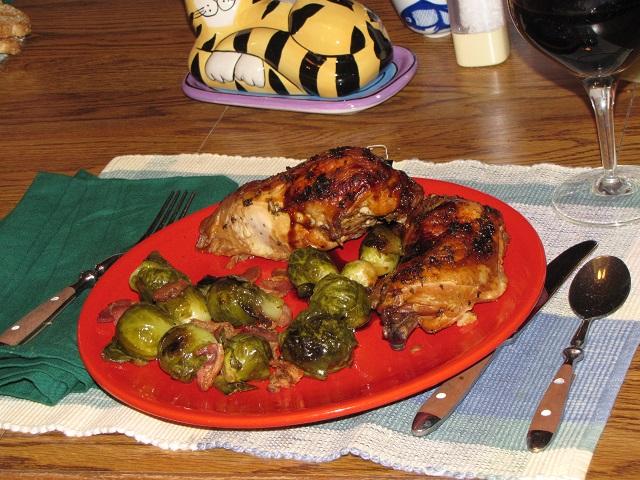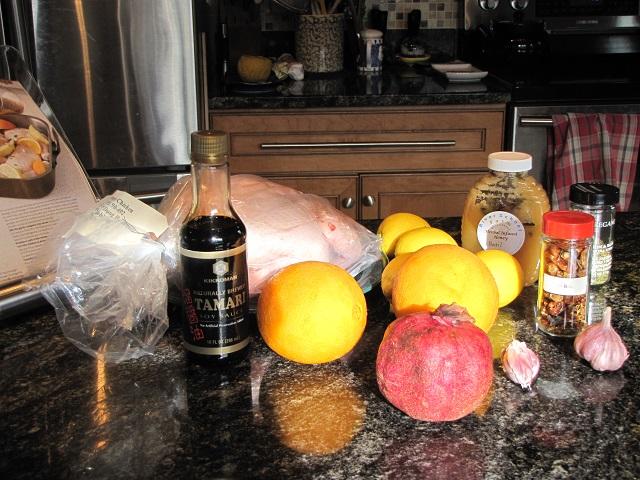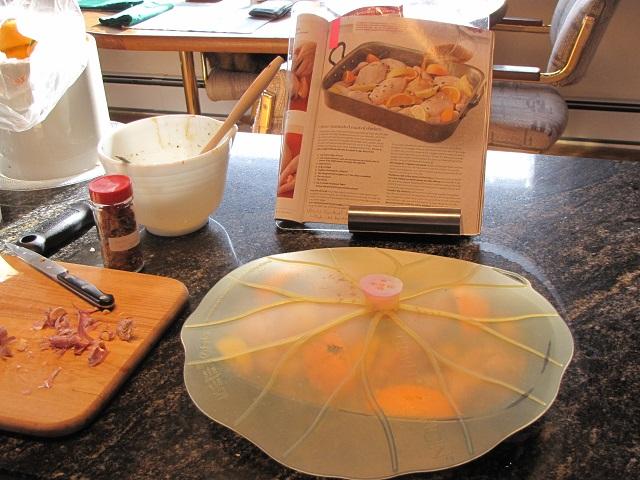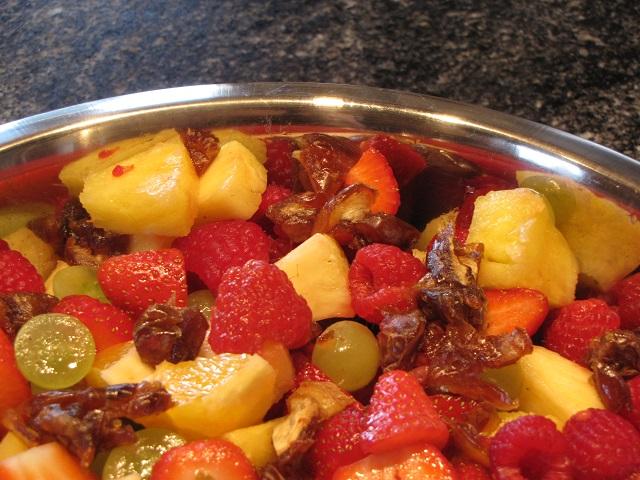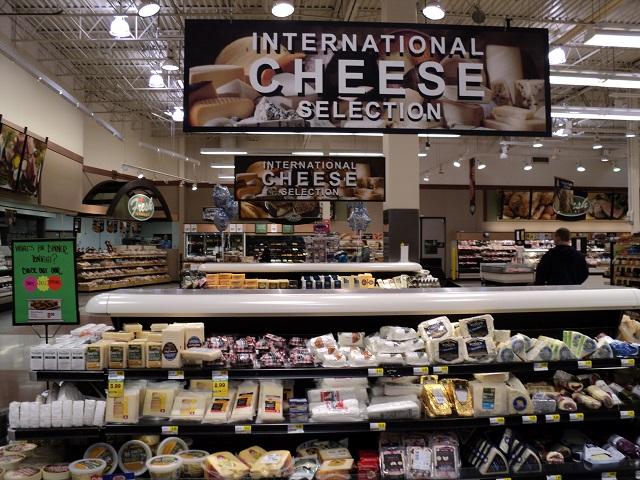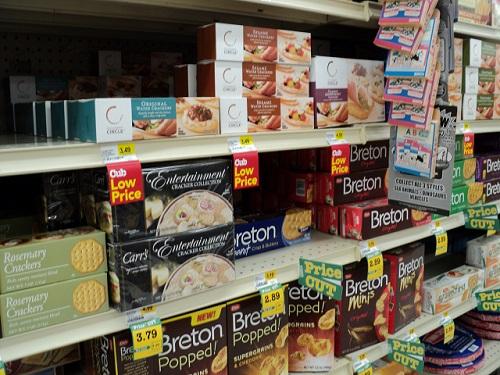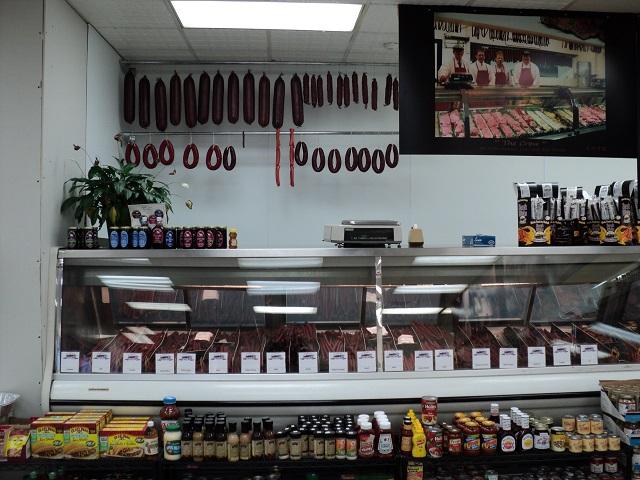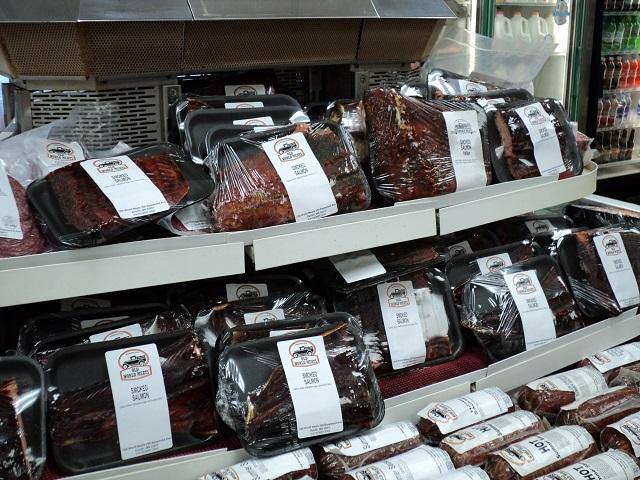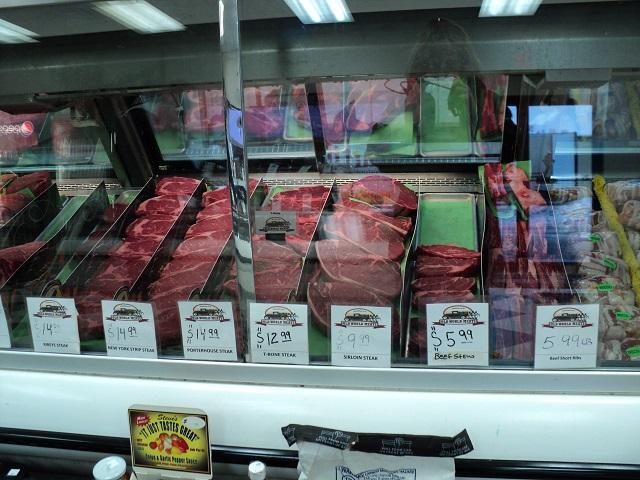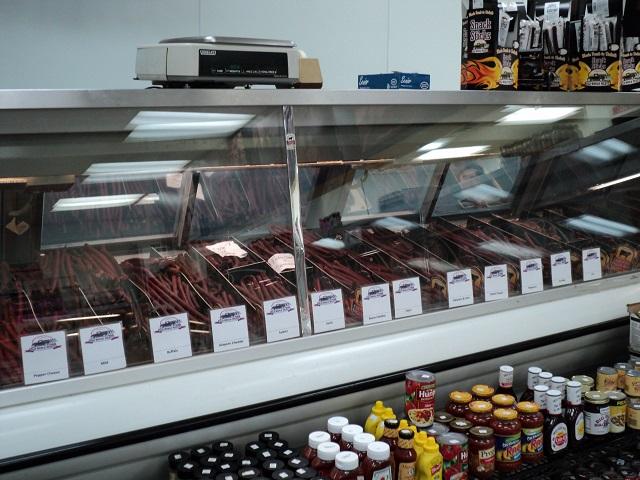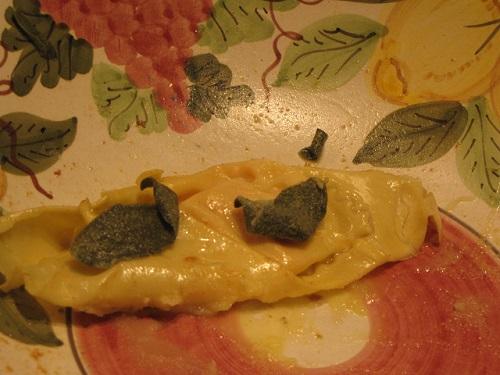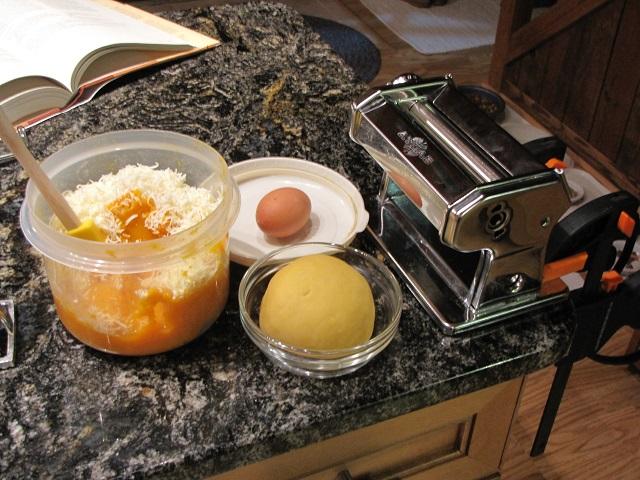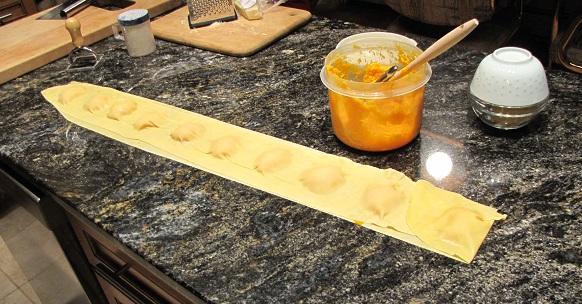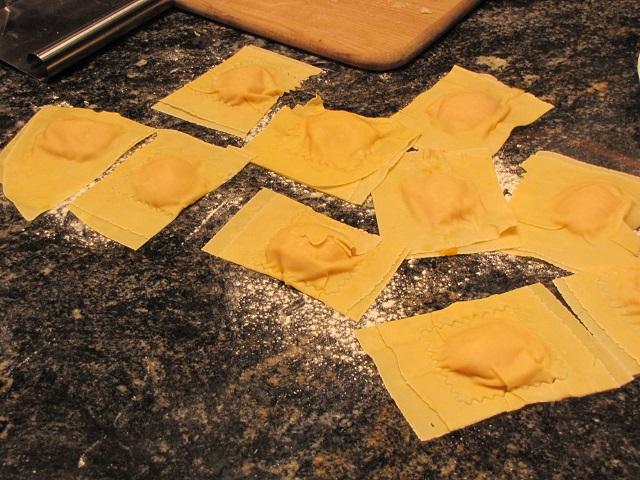-
Posts
13,560 -
Joined
-
Last visited
Content Type
Profiles
Forums
Store
Help Articles
Everything posted by Smithy
-

Foodblog: Smithy - Notes from the land of Cheap Refrigeration
Smithy replied to a topic in Food Traditions & Culture
Thanks for that, rotuts. I've been following the topic about the reviews. Very interesting! -

Foodblog: Smithy - Notes from the land of Cheap Refrigeration
Smithy replied to a topic in Food Traditions & Culture
Tonight we're having friends over for dinner and a movie, so the meal plan involves a lot of finger food and the fixings for sandwiches. I generally make bread by hand these days, but on days like this when we're trying to thaw frozen water pipes (!) it's nice to just throw stuff into the machine. This bread machine cookbook is still one of my favorites. In the machine are the makings of "Rita Fried's Garlic Herb Bread". My Old World Meats tri-tip is waiting to begin cooking. I'll be trying out a protocol set out by America's Test Kitchen in an edX course on the Science of Food and Cooking: sear quickly, then cook very very low and slow. At times like this I wonder if sous vide is in my future. Here it is, in its original package. I was a bit surprised to get it home and find they hadn't cut it themselves, but I think demand must have risen enough that they order it specially. -

Foodblog: Smithy - Notes from the land of Cheap Refrigeration
Smithy replied to a topic in Food Traditions & Culture
One of the things we did when we remodeled the kitchen was solve some thorny storage problems, Corner storage is always an issue: our old cabinets had a blind corner with an open space, out of sight, between the end of one set of shelves and the under-sink storage. The cats loved it. I found a food mill that the previous owners had probably long since lost. One of my priorities was to use that space better. Ta-Da! Turntables in the corners! The lower corner has larger-radius turntables with a corner cutout. I didn't bother attaching a photo, but I'll show it if someone asks. We also made good use of pullout storage. The waste baskets (3: 1 for trash, 1 for paper recycling, and 1 for other recyclables) sit in one pullout rack. Many cutting boards and baking sheets, as well as those countertop drain pads, occupy another. The pots and pans, and small electric appliances, are on rollout shelves. I love being able to roll out a whole shelf and grab what I want, instead of having to dig to the back of a cabinet. -

Foodblog: Smithy - Notes from the land of Cheap Refrigeration
Smithy replied to a topic in Food Traditions & Culture
Garrison Keillor often makes jokes like that about a "mixed marriage" in Lake Wobegon being between Lutherans and Catholics. As far as I know, I'd have to drive to the Twin Cities (Minneapolis/St. Paul) to find a Middle Eastern, Oriental, Mexican or Indian grocery store. That's around 3 hours from here, so I resort to mail order or else stocking up when I'm passing by a convenient store. Woe is me, my favorite mail-order place seems to have folded. Flavor of the Med (Flavorofmed.com) is the only source I've found for Greenland feta cheese, an Egyptian creamy feta packed in tetrapcks. Alas, their web site is down and they aren't answering my calls or emails. (If anyone reading this knows of another source, please PM me.) I may have to do without that cheese. -

Foodblog: Smithy - Notes from the land of Cheap Refrigeration
Smithy replied to a topic in Food Traditions & Culture
I have one 9 1/2" chef's knife that I hand-wash. I only use it for veggie prep. All other knives go into the dishwasher. My machine has a 6 comparment cutlery tray built into the door. I only put one knife in each of the 3 sections I use for knives so that they don't bang against each other. My other 9 1/2" chef's knife, which I have had for 30 years, does go in the dishwasher. The two 9 1/2" are from the same maker, long out of business. I sharpen all of my knives on my EdgePro and have never had issues with the dishwasher affecting them. I spent 16 years in the corrosion monitoring industry so I have some insight as to what could happen.IMAG0345.jpg Corrosion monitoring, eh? You're the perfect person to ask, then: is it just the knives' being banged around that's hard on them? I'd gotten the idea that the dishwasher detergent could pit them. Does the type of detergent and the water chemistry change the answer? Feel free to PM me if the answer is too long - but I bet there are a lot of others here who would also be interested. -
I still don't understand how the vacuum pots work. Are they basically the same principle as a percolator?
-

Foodblog: Smithy - Notes from the land of Cheap Refrigeration
Smithy replied to a topic in Food Traditions & Culture
rotuts, I'm howling with laughter; that cartoon is very definitely "feed me" related and true to all four of our cats! Our Siberian husky is less subtle. it's a miracle he hasn't stuck his nose into the photos before now. I'll send you more information by PM; I'm always happy to talk about "my kids". C. Sapidus, how nice of you to check in! That's funny about the cabinets. My darling and I have both lived in places without that grease-attracting gap above cabinets, and we both preferred to keep it open for display/storage...grease notwithstanding. It takes a stepladder for either of us to reach something up there, so anything we use frequently that can fit into a lower cabinet lives there instead. Your comment about grease accumulating despite a good hood makes me feel a bit better about our arrangement; maybe it isn't all that bad after all. My fears about the roasting pan being overfilled were unfounded. In addition to the chicken we had brussels sprouts with bacon, and beverage of our choice. He prefers beer with dinner. -

Foodblog: Smithy - Notes from the land of Cheap Refrigeration
Smithy replied to a topic in Food Traditions & Culture
Tonight's dinner is marinating at present. The recipe is a happy discovery from Fine Cooking, Issue #155 (Feb/Mar 2012): Citrus-Marinated Roasted Chicken. http://www.finecooking.com/recipes/citrus-marinated-roasted-chicken.aspx Start with these ingredients: Most of it's self-explanatory. The recipe actually calls for 2 chickens in order to make plenty of leftovers, but we're already swimming in leftovers so I just pulled one chicken out of the freezer. This chicken was locally raised and purchased at our farmer's market last summer. The honey is a product of a really great farm out near Reno, Nevada, and was a gift from my sister. Great stuff. This is infused with basil, definitely not a part of the recipe, but I think it will add a nice touch. The pomegranate is also my addition; I'll use some seeds as garnish. I picked too small a roasting pan and will have to put a drip pan under it in the oven, but otherwise I think this will be fine. It's to marinate for at least 6 hours before roasting. This kitchen island has outlets on both sides and at one end. When I designed it I told the electrician that I wanted it wired like a lab bench. He looked me over - we'd all been working together long enough to be comfortable - and said, "I think you're a bit of a mad scientist!" The cats aren't allowed atop kitchen surfaces, but I usually have one supervising as I work. -

Foodblog: Smithy - Notes from the land of Cheap Refrigeration
Smithy replied to a topic in Food Traditions & Culture
I love the idea of using power tools to deal with kitchen chores. As I recall, you use a lathe to peel winter squash, do you not? I think of Duluth's population as still being pretty homogenous: European ancestry, for the most part: Scandinavian, Germanic, Slavic, British Isles, based on the faces I see in the grocery store. However, the populations of the university and colleges here are quite mixed, as are the staff of the medical facilities: with 2 major hospital chains and I-don't-know-how many clinics, the medical practice accounts for a lot of employment around here. Unfortunately the demand for international cuisine hasn't been enough to keep any sort of specialty store afloat, except for a couple of Italian groceries that have been around here forever. (Italian immigrants were a major wave early in the last century.) The Oriental grocery died several years ago, I believe a victim of the general economic slump that hit us all around 2008. There's never been a good Middle Eastern or Indian grocery store here. I'm glad that Cub and Mt. Royal, my other favorite large grocery store here (still to be visited this week) are meeting the demand. -

Foodblog: Smithy - Notes from the land of Cheap Refrigeration
Smithy replied to a topic in Food Traditions & Culture
We make our own, sort of. He starts with a package of Good Seasons Italian or Zesty Italian dressing mix. He uses white balsamic vinegar and about a 50/50 mix of olive oil and whatever vegetable oil we have on hand (Wesson soybean, at present). The mixture of oil is so that his doesn't congeal in the refrigerator. I prefer a vinaigrette based loosely on an Egyptian salad dressing recipe I picked up a few years ago. Start with a clove or three of finely minced garlic, then grind it with a couple of teaspoons of fine sea salt to make a paste. Scoop those into a mixing jar. Maybe add some dried sumac, or a touch of dijon mustard, or freshly chopped cilantro and/or parsley, depending on mood and availability. For acid I generally use lemon juice - Meyer if I can get it - but if the lemons are tooooo strong I may tone it down a bit with white wine vinegar. I like straight olive oil, even though I have to take the salad dressing out of the refrigerator in advance to get it to de-congeal. My preferred proportions are 2 parts oil to 1 part acid, so if I squeezed enough lemon to get 1/2 cup I'll use 1 cup olive oil. With regard to the congealing oil, I've discovered that if I can keep the dressing emulsified it doesn't set up as hard. Toward that end I've experimented with a touch of xanthan gum, to some success, although it's easy to overdo it and give the dressing an unpleasant drooly consistency. Once I hit on the "two parts oil to one part vinegar" routine, I started having a blast with making my own salad dressings. I find that walnut oil and (red) balsamic vinegar are brilliant together. You can see my salad dressing, recently shaken (it does separate quickly), in the background of this lunch photo. -

Foodblog: Smithy - Notes from the land of Cheap Refrigeration
Smithy replied to a topic in Food Traditions & Culture
I am rather anal about having only plastic cutting boards in my kitchen. I am very big on everything being able to go into the dishwasher. I purchased a bamboo board a few years ago. I rarely used it because of my aversion to hand-washing. It finally went to a thrift shop. (The aversion is to hand-washing as the final cleaning. I pre-scrub everything before it goes into the dishwasher. Maybe if I had a 3-compartment sink in my kitchen...) I also got a chuckle out of recognizing the mixing bowl you used. I have them in multiples in 3qt through 8 qt plus a14 qt. Are yours Tramontina or another brand? Thank you for the compliments! The mixing bowl is some thing I picked up at, oh, Target or Pier 1 or a grocery store down south. I keep buying more of these - I have 2 or 3 in the trailer and 2 here at home - in different sizes. They're such great mixing bowls, and I like the shape. The very first bowl of these I bought over 30 years ago at some import store in Pasadena, I can't even remember the name. Maybe a Cost Plus? Early Pier 1? -

Foodblog: Smithy - Notes from the land of Cheap Refrigeration
Smithy replied to a topic in Food Traditions & Culture
Porthos, rotuts and heidih, thanks for all the input on the cutting board. I'll try the bleach method and see whether that helps. I wouldn't have described it as a grassy smell, though; I know what a bamboo steamer smells like and this wasn't it; it seemed a bit more sour, and not in a pleasant lemony sense. That's part of the puzzlement. I have a couple of wooden cutting boards as well as several plastic ones. The most useful to me are the flexible mats - usually 3 or 4 to a package for not much money. I use those for meats, but have read that they're harder on knives than wooden cutting boards. Their flexibility is wonderful: cut or chop stuff, flip it into the bowl or pot. I also like that they're more or less dishwasher-safe. However, I find that they do warp in the dishwasher after a while, so I tend to wash them by hand if they were used for fruit or vegetables. Porthos, I'm probably almost as careful as you about meat contamination...but I don't worry about pre-washing before things go into the dishwasher. Is that because your dishwasher doesn't get things clean without a careful prerinse, or some other reason? Do your knives also go into the dishwasher, or are they an exception to the "no handwashing" rule? -

Foodblog: Smithy - Notes from the land of Cheap Refrigeration
Smithy replied to a topic in Food Traditions & Culture
This bamboo cutting board is a new acquisition: $10 from Smart and Final, and I've been admiring the beauty of these babies for a while. Today was the first time I used it. I cleaned it before use, but as I cut the strawberries I started noticing that it was taking a stain from the berries and a strange odor was coming up. It doesn't seem to have affected the flavor but I stopped using it and went back to one of my flexible cutting mats - which are, actually, more practical for this operation, despite the admonitions that plastic is hard on knives. Should I have cleaned and sealed the bamboo board better? How? My plan, unless I hear otherwise from some experienced person, is to do the standard butcher block treatment: salt and vinegar, scrape, then rub with mineral oil. This board came with a $1-off coupon for the company's special sealant, but I can't see spending $12 on a special treatment for a $10 board. -

Foodblog: Smithy - Notes from the land of Cheap Refrigeration
Smithy replied to a topic in Food Traditions & Culture
My darling's breakfast is generally fruit salad with whole-grain Cheerios. Just as with the green salad I showed, we find it works best to make several days' worth in advance and store it for ready access. Here are the fixings: The berries, grapes and pineapple were purchased at Cub Foods yesterday. The oranges and dates we brought back with us from California. He's less fussy than I about fruit in season and has absolutely no qualms about buying it from wherever he can get it (the grapes are from Peru). I have qualms about some such items: for instance, I just can't bring myself to buy stone fruits at this time of year because it's an insult to the real deal...but the fresh fruit does help brighten our diet, and he's firmly in the "any port in a storm" camp of winter survival. Actually, the strawberries look and taste surprisingly good this time: red through, not too soft, but they have good flavor. The finished salad fills a 3-quart mixing bowl. He'll fill a 2-quart plastic storage tub with some of it, and apportion the rest into smaller containers, ready to receive the cereal. When we first started this fruit-salad-in-advance plan we made smaller batches so it wouldn't rot, but we've learned that the pineapple juice, all of which goes into the salad, does 2 things: it seems to help preserve the fruit quality, and it prevents the navel oranges from going bitter as they sit. When there's no pineapple to be had, another stratagem is to use fruit juice as the base for a fruit-salad gelatin. The gelatin helps keep the fruit fresh. A gelatin made from freshly squeezed mandarin oranges, or minneola tangelos, or an orange-lemon mix, is a wonderful thing. -

Foodblog: Smithy - Notes from the land of Cheap Refrigeration
Smithy replied to a topic in Food Traditions & Culture
-
Great trip report! I'm surprised: I thought all the US-based airlines had done away with Real Food. Guess I've spent too many hours in Cattle Class. Thanks for those wonderful photos!
-
You're absolutely right! In case you don't know about it, there's a short course on knife skills in the eGullet Culinary Institute that you may find useful. http://forums.egullet.org/topic/25958-basic-knife-skills/ eta: there's also a good discussion about differing techniques in the Q&A section that follows the course.
-

Foodblog: Smithy - Notes from the land of Cheap Refrigeration
Smithy replied to a topic in Food Traditions & Culture
Ufda. Today was not much for eating, much less for cookery. We spent much of the morning using an evil implement called a "roof rake", trying to ease the snow load on one of our outbuildings. Eventually we figured out how to "work smarter, not harder", but it was still mid-afternoon before we stopped. The standard breakfast occupied one rest break; lunch involved the last ravioli from last night and, er, I forget what else. Once we'd called it a day on (note that I did not say "finished") the outside chores we set out for the day's errands. The plan had been to allow 5 hours and be home before 5 p.m; the reality crammed them into 3 hours and got us home by 6. I still managed to snap some photos during our shopping. I briefly entertained the notion of a parody along the line of "The Twelve Days of Christmas" for Duluth's great food and kitchen stores: "Three grand grocers", "Two great charcuteries" and so on, to celebrate the expansion of wonderful groceries, butcher shops and even kitchen stores since I moved here. I decided I couldn't make the numbers work. Here, without further ado, are the places we visited today. Old World Meats is in its third generation of family owners/operators, and they keep expanding and improving. They've remodeled and reworked the space, just since last October. Instead of a couple of cluttered aisles where home sausage-makers could buy their spices and supplies (I forgot to ask where those items are now kept) they've expanded the island for their cured meats, and set up a charcuterie section to show off their excellent sausages, spicy beef sticks, and smoked foods. Their meat counter is something to behold. Back in 2005 there was an eGullet Culinary Institute short course on braising; that's when I started getting to know the fellows here. I've been a regular ever since. These are the people who can get a specific cut and/or advise you on how to cook it. They smoke meats and fish, mix sausage, and have strong opinions about how to cook their products...if, but only if, you ask. They also have a great fish counter. Today, however, the display case was atypically empty due to a heavy deep cleaning when they "knew business would be slow". Trust me: you can usually get good fresh salmon and halibut there, and you can often also get scallops, shrimp, or fish that I can't remember because I'm not particularly interested in it. We picked up some smoked salmon, upon which I hadn't planned, along with the pre-arranged tri-tips. More about those in a later post. One of our favorite grocery stores here is technically part of a chain, but its counterparts are all far south: Minneapolis, St. Paul, and those areas. Cub Foods was a big breath of fresh air when it first arrived up here, and it gets much of our business. Over the years, as subject to market pressure as any other place, they've expanded their produce areas added to their inventory to accommodate multiple cuisines expanded their deli area and allowed other ways for us to spend entirely too much money. We picked up items for a dinner party in a couple of days, and continued our rounds. When we FINALLY got home, we enjoyed the crystalline quality of moonlight over a snowy landscape, as seen from a hot tub, ...then enjoyed reheated pork roast and sauerkraut, from last week's crockpot cookery. I'll post photos if anyone wishes, but it was much more tasty than pretty. Think beige. Then think savory, salty and juicy. -

Foodblog: Smithy - Notes from the land of Cheap Refrigeration
Smithy replied to a topic in Food Traditions & Culture
Thanks for that suggestion, judiu! I think I'll use it on the remainder of the squash filling. -

Foodblog: Smithy - Notes from the land of Cheap Refrigeration
Smithy replied to a topic in Food Traditions & Culture
I'm reminded of the ladies who make the pierogi at St. Stephen's Church here in Oswego. Every day of the week leading up to their big festival, they make one kind of pierogi, and one filling. First, they make the dough (usually three or four food processors and stand mixers going at a time), set each batch aside to rest for a moment, and pass a batch of rested dough on to someone else to roll it out and cut circles. The circles get placed on parchment-lined sheet pans, and sent on to the tables of fillers. The fillers take the balls of filling that were made yesterday, place each ball onto a dough circle, pinch the edges shut, and put the filled pierogi back onto the sheet pan. The pans then go to a checker, who checks that no filling has crept into the seal (which would result in the pierog opening in the boiling pot) and fixes any potential problems, and then put in the freezer to wait for the festival. When the day's batch is complete (meaning all the dough balls have been sealed into dough), the next day's filling gets mixed and scooped with a disher into individual balls, which are put on parchment lined sheet pans and frozen. The freezing helps to keep the filling in a rounded shape, which in turn keeps it away from the edges when the dough gets pinched shut so the pierogi stay properly sealed in the cooking process. Doing it the day before also helps to expedite the assembly line, because the filling becomes grab-and-go and because the dough makers will know exactly how many batches of dough they need to make that day, for the complete batch. The pierogi stay frozen until the festival, when they get boiled and then fried. They'll also sell them frozen, for people to take home and cook later.I wonder if a similar methodology of freezing ravioli filling in dollops would help to expedite your process? Great idea, and thanks for the evocative description of the St. Stephens assembly line! -

Foodblog: Smithy - Notes from the land of Cheap Refrigeration
Smithy replied to a topic in Food Traditions & Culture
I made a half-batch of dough, and used about 2/3 of it. The remainder is wrapped tightly in plastic wrap, and stored in the refrigerator. Sometimes in past batches I've gotten round to using the remainder in the next day or two, with no apparent deterioration in quality. At other times I've had that extra sitting in the fridge for 2 weeks, and finally decided that I had no plans for it, and thrown it away despite misgivings about wasting food. When I made a half-batch of dough last night, however, I forgot that I'd made a full batch of filling! I think I'll be trying MelissaH's suggestion. -

Foodblog: Smithy - Notes from the land of Cheap Refrigeration
Smithy replied to a topic in Food Traditions & Culture
Duxelles are a great idea for this. I have a ravioli mold that makes smaller pieces, maybe 2x2 inch instead of the 3x3 I was shooting for. It makes for a more orderly looking product. The raviolini attachment to my pasta maker didn't really get a good seal the time I tried it. Maybe my filling was too sloppy. What about the rollling pins with ridges? They look fun but ineffective to me, but I've never seen one in action. -
Exactly; and he's been on that tip for quite a long time (my memory's far from perfect but I seem to remember him bringing it up in On Food and Cooking). Incidentally, I'm in that EdX course too and I think he may have mentioned the searing thing, possibly in week one (though again, my memory's far from perfect). He certainly did mention the searing thing, during the introduction in week 1, in the context that it doesn't seal in juices. There was even a quiz question on that. I don't remember his having gone on to say that it logically follows that searing should be done last.
-

Foodblog: Smithy - Notes from the land of Cheap Refrigeration
Smithy replied to a topic in Food Traditions & Culture
Well! Well, well, well! Ravioli tonight, to mixed success. The recipe is "Cappellacci di zucca" (Large ravioli with winter squash) from the above-mentioned "Sauces and Shapes" book. I made the egg pasta dough (pasta all'uovo) from the same book, and tossed it with Burro al salvia (melted butter and fresh sage), also from this book. As with almost anything worth doing, there's a learning curve, and I've just barely started up the slope called "stuffed pasta". The dough was time-consuming but not difficult; I've worked to make pasta dough enough now that I can feel when it's developing the proper texture, and make adjustments when necessary. I don't have the hang of gauging the amount of filling for the size ravioli I plan. As a result, I ended up slicing the ravioli with a knife instead of using the intended stamp; even then, one split and lost its filling to the water. In fairness, I'll note that the recipe calls for making free-form cappellacci - essentially, making a square, setting some filling into the middle, and folding opposite corners together to make a rough triangle. It sounds simple, but to date my attempts at making free-form stuffed pasta have been too ludicrous for words. I opted to test the recipe and flavor balance and not worry about the ravioli form. The biggest, most lovely revelation of the entire night was melted butter with sage. Where have I been all this time? That's a wonderful flavor combination, and one I won't forget. By the time the sage leaves had cooked in the butter they were crisp, to the point that I wouldn't have dreamed of removing them. They added a nice texture to the meal when encountered, and a pleasant color as well. I think the consensus of the household is that we prefer things a bit more savory, and the squash/cheese/egg filling was too sweet and, er, not meaty or savory enough. Setting these ravioli up in a sauce containing meat, or perhaps including some meat with the filling (I don't know how) was the suggestion before the evening closed down. I'd call the meal a qualified success, with suggestions for improvement to meet our tastes to come along later. But oh boy, that sage butter! -
Harold McGhee is also on board with the sear-last approach. Can't find a link at the moment but he makes a good, science-y case for it... Funny! I wonder if there's been heated (heh) behind-the-scenes debate amongst staff in my edX cooking course, to which McGee and ATK are contributors? I can just hear it: "But...but...but...we've already cut the videos! You can't change your recommendations now!" Isn't science wonderful? :-)


